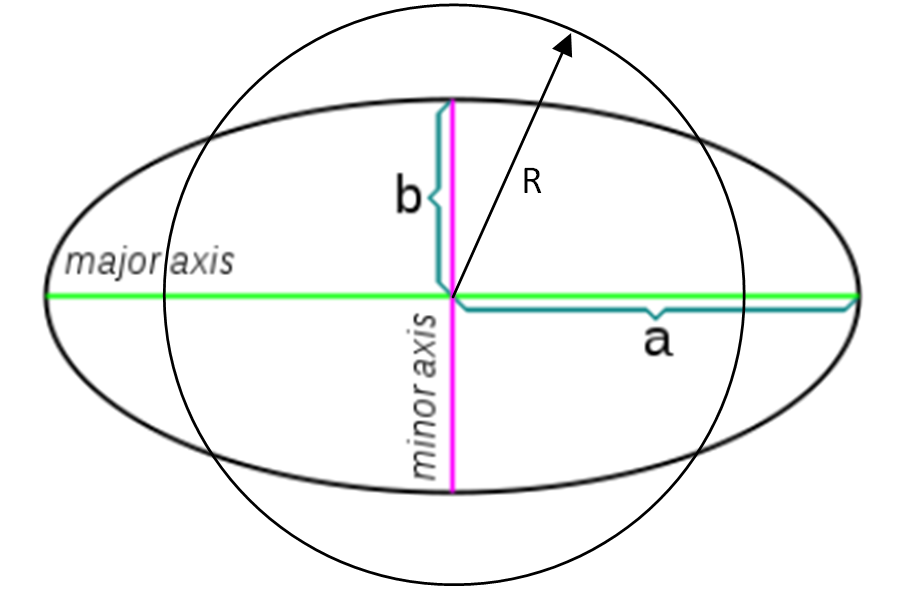Here’s a quick addition to that last post on various types of means. By coincidence, yesterday, a question came up in my AP physics class about the meaning of the average radius of an ellipse.
We were looking at the laws that govern circular orbits. But the orbits of planets are actually elliptical with the Sun at one focus. The average orbit radius is the length of the semi-major axis. [When I first read that, it seemed wrong to me: how can the semi-major axis be the average distance — shouldn’t it be the greatest distance? But average orbit radius is average distance to the Sun, not to the center of the ellipse. The Sun is at one focus so the planet distance is sometimes more than the length of the semi-major axis and sometimes less. But that’s not the same thing as the average radius of the ellipse, which is the question that was asked.]
I’m not sure how useful it is to find the average radius of an ellipse, but it is interesting — and better with a picture!
The distance from the center of a circle to any point on the circle is a constant — that’s the length of the radius.
The distance from the center of an ellipse to a point on the ellipse is not constant. The longest it can be is the semi-major axis, a. The shortest it can me is the semi-minor axis, b. But what do we mean by the average radius? One possible interpretation is that the average radius is the arithmetic mean of the two semi-axes. But here’s another interpretation:
What is the radius of the circle that would have the same area as the ellipse?
Clearly, that radius would have to be more than b and less than a. So maybe it is their mean…but which kind of mean?
To answer this, you need to know two formulas:
Acircle = πr2
Aellipse = πab
So if the two areas are two be equal, we need r2 = ab.
In other words…
For a circle to have the same area as an ellipse, the length of its radius must be the geometric mean of the lengths of the ellipse’s semi-major and semi-minor axes!
I didn’t know that. And I was surprised to see a geometric mean pop up in class so shortly after my last post. Also, I should add: I don’t know how to show that the semi-major axis is the average orbit radius. If any of my fine students can come explain that to me, it is certainly worth a little extra credit.


I don’t know whether this is the kind of proof you were looking for, but we can easily show that the semi-major axis is the “average distance”, if by “average distance” we mean the mean of the aphelion and the perihelion:
http://imgur.com/nSh6hc3
Maybe it’s trivial, but it could be the reason why they call it the average distance
Sorry, wrong link: http://imgur.com/357VtbG
That answers the question I asked, but not the one I meant to ask! I didn’t state my own question clearly enough. The context where this came up in class was when talking about Kepler’s laws. We say that R^3/T^2 is a constant for any collection of objects in orbit around the same central object. In that equation, R is the orbit radius. But Kepler’s first law says that the orbits are actually ellipses. So this R is the average orbit radius. But is it the arithmetic mean of the aphelion and perihelion? Or the geometric mean? Or some other mean?
Anyway, thanks for the comment and diagram.